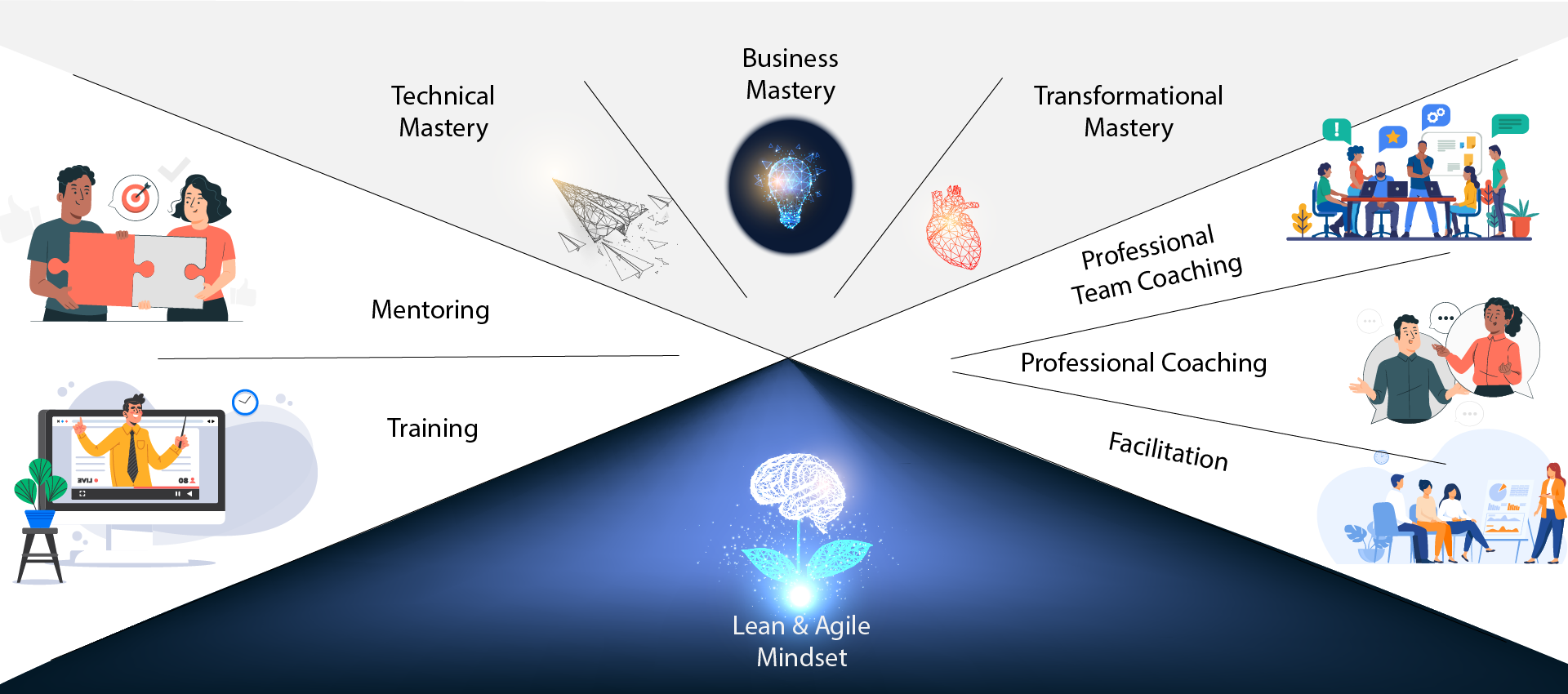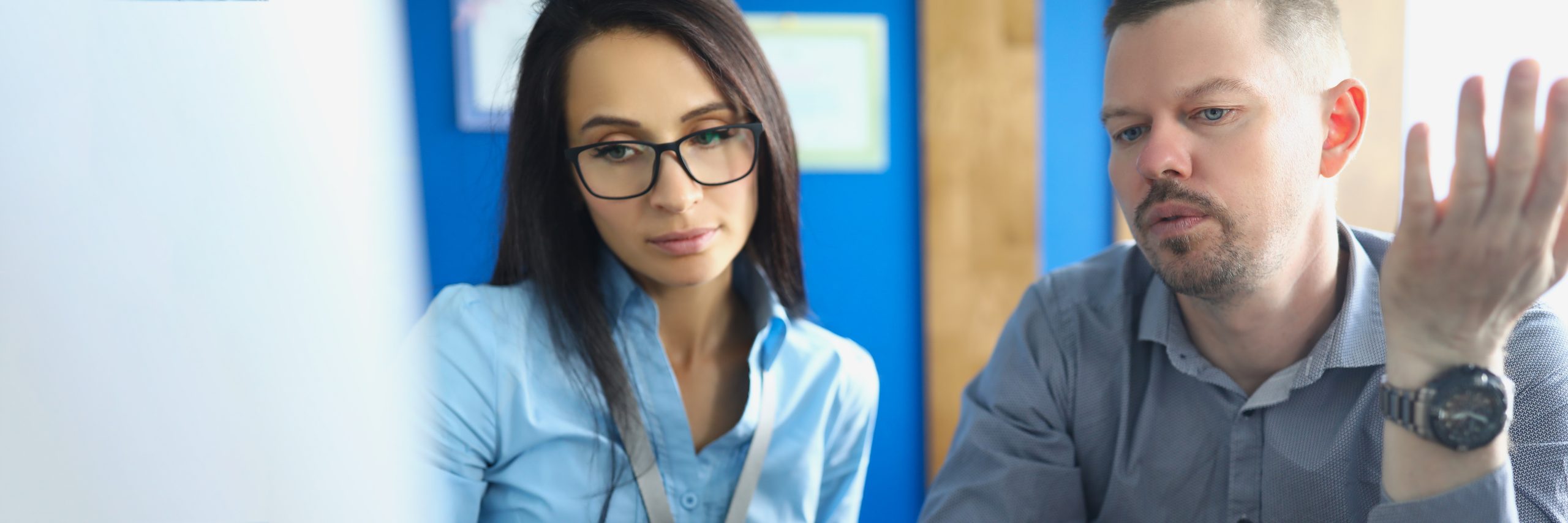What is Agile Coaching?

Coaching as Home Base in the Agile Coaching Stance
An Agile Coach always comes from the position of Coaching.
It is their starting and ending point for every engagement and underpins their thinking and way of being regardless of whether they show up in the temporary role of Facilitator, Mentor or Trainer. It is a departure from consulting where the expert is seen to have all the answers and is employed to solve the problems at hand. Because systems that match the benefits of what Lean and Agile can bring are inherently complex adaptive systems and not simple-predictable systems that is suited to consulting, a coaching role is taken instead.
This is in response to the realisation that in some cases, the changes that traditional consulting does not always enable organisations with the means to grow generatively – able to adapt with changing circumstances, long after the consultant has left.
The traditional approach to diagnosis, selection of a framework, and implementation thereof – with data-driven results seems to be increasingly challenged when faced with the frequently changing and complex circumstances organisations now face.
The table below outlines the shift in focus:
| From Problem Solving | To Coaching |
|---|---|
| Directing | Listening |
| Telling | Acknowledging |
| Giving Advice | Articulating |
| Knowing & Certainty | Asking & Not knowing |
Reference: Team Catapult: Coaching Agility from Within
What makes Agile Coaching different to Professional Coaching?
Agile Coaches, as defined in industry, have several competencies to draw from. The traditional consulting approach pertaining to the diagnosis and implementation of frameworks and processes are positioned in the Agile & Lean Practitioner competency as can be seen below.

Instead of leading with telling, the Agile Coach leads with Inquiry and the Coaching Stance to support the Process of Change through Coaching and Facilitation. The Process authority competencies are employed in support of sense-making and integration of changes in the system in levels of being and doing.
When the Agile Coach works within the Coaching domain, the focus is on topics related to the Change the individual or system is embarking on – in other words it is related to:
- business;
- transition & adoption;
- application of new roles,
- processes or skills; and
- sense-making to deal with complexity
Professional Coaching outside of Agile Coaching can focus on these aspects as well, while Agile Coaching narrows its application of Coaching to the transformation at hand. Agile Coaching includes other competencies, like Training and Mentoring – which Professional Coaching does not.
Process Authority in Agile Coaching

These are usually short, focused and problem related conversations, making use of the coach’s ability to apply the coaching stance to support sense-making. These conversations are not ongoing, nor usually more than 15-20 minutes (ideally even less).
 The focus on team coaching pertains to how the team works together. This entails looking at:
The focus on team coaching pertains to how the team works together. This entails looking at:
- communication and decision-making
- stakeholders and client centricity
- their processes, it’s complexity and efficacy
- planning, feedback cycles and escalations
- the relationships in the team and with others in the organisation
We rely on several frameworks, models and tools to do this work.

Facilitation is key to organisational sense-making, decision-making and change. Effective facilitation enables the emergence of generative thinking, where the work of the collective, exceeds the potential and outputs of any individuals.
Agile Coaches vary their approach depending on the type of meeting required and the culture of decision-making in the organisation and the type of decision that needs to be made
Content Authority in Agile Coaching

When it becomes apparent that domain knowledge in a particular area is required, the Agile Coach contracts with the individual, team, group and/or leader for training in a specific area to be provided. The approach to training follows the adult learning principles, blended learning approach and double-loop experiential learning approaches.
Here the Agile Coach may bring awareness to Agile and Lean Thinking as possibilities the client can choose from to address the problem and opportunities at hand. This is typically followed up with integration opportunities like workshops, coaching and the development of measures to ensure efficacy.
The operating assumptions for training include:
• The learner is:
• Competent, capable and comes with a wealth of knowledge
• The owner of their learning and experience
• Able to connect the dots between theory and their practice
• Information is shaped to serve the learner’s needs
• Learning outcomes are still attained
• Greater awareness on possibilities for further learning
Are you curious to learn more about my Training Stance as an Agile Coach? Read this blog post: My Training Philosophy as an Agile Coach

The mentoring stance follows the Agile Coaching Conversation Competencies and adds data-gathering questions before envisioning the future; getting permission to share insights, experiences or co-generate options (done lightly and without attachment); the sharing of pro’s and con’s for each; and checking for resonance and stickiness with the mentee.
It is typically also a short conversation (10 – 20 minutes), and not necessarily an ongoing mentor-mentee relationship.
The Agile Coaching Approach
The Agile Coaching stance when supporting multiple-teams or an organisation with their path towards Agility is to:
- Start with observation, interviews (active listening) and contracting conversations
- Identify leaders owning and driving the change ahead and who has the authority to make changes to the system
- Workshops to reveal the existing system to the members and support sense-making on what is working and not working and how we got here (Tools may include Value Stream mapping, process mapping, artefact mapping, waste mapping, communication and dependency line mapping, culture mapping, relational and role mapping and more).
- Facilitated workshop(s) to envision a desired future and creation of a backlog of items to address (Future search, future feature or futurespective)
- Create a core-group that will take lead in the transition efforts
- Create a working alliance for the change core-group and the work ahead.
- Forming working hypotheses for the challenges
- We do this as fast as possible and as slowly as is necessary.
This approach ensures the reduction of my personal bias and the self-diagnosis of what needs to change within the system. This may include creating awareness through sharing new information as part of the backlog.
By taking an Action-Research approach, collective sense-making results in the formation of hypotheses for change, which are tested in a time-box. In so doing the Lean process of Plan, Do, Check and Act is employed to ensure continual improvement.
The Agile Coach can also support the creation of specific communities of practice that further supports the maintenance and sustaining of change after the initial change process has completed.
Conditions for Agile Coaching

Organisational transformation starts with its leaders. Agile Coaching that excludes active participation and involvement in the change and transformation by the leaders themselves typically result in sub-optimisation, change fatigue, increased resistance to change and systemic waste accumulation in the system as a whole.
Agile Coaching can be started and stopped at any time as it is not a pre-requisite for change. Change happens in your organisation all the time. However, Agile Coaches are partners to and catalysts for systemic change and are therefore beneficial where transformation is sought, and it is recommended that key individuals learn how to lead change and that ownership of continual improvement and transformational change takes root before an Agile Coach disengages a system.
Agile Coaching is not designed to be a permanent fixture of any system. Agile Coaches seek to make themselves redundant by enabling sustainable change within a system.
